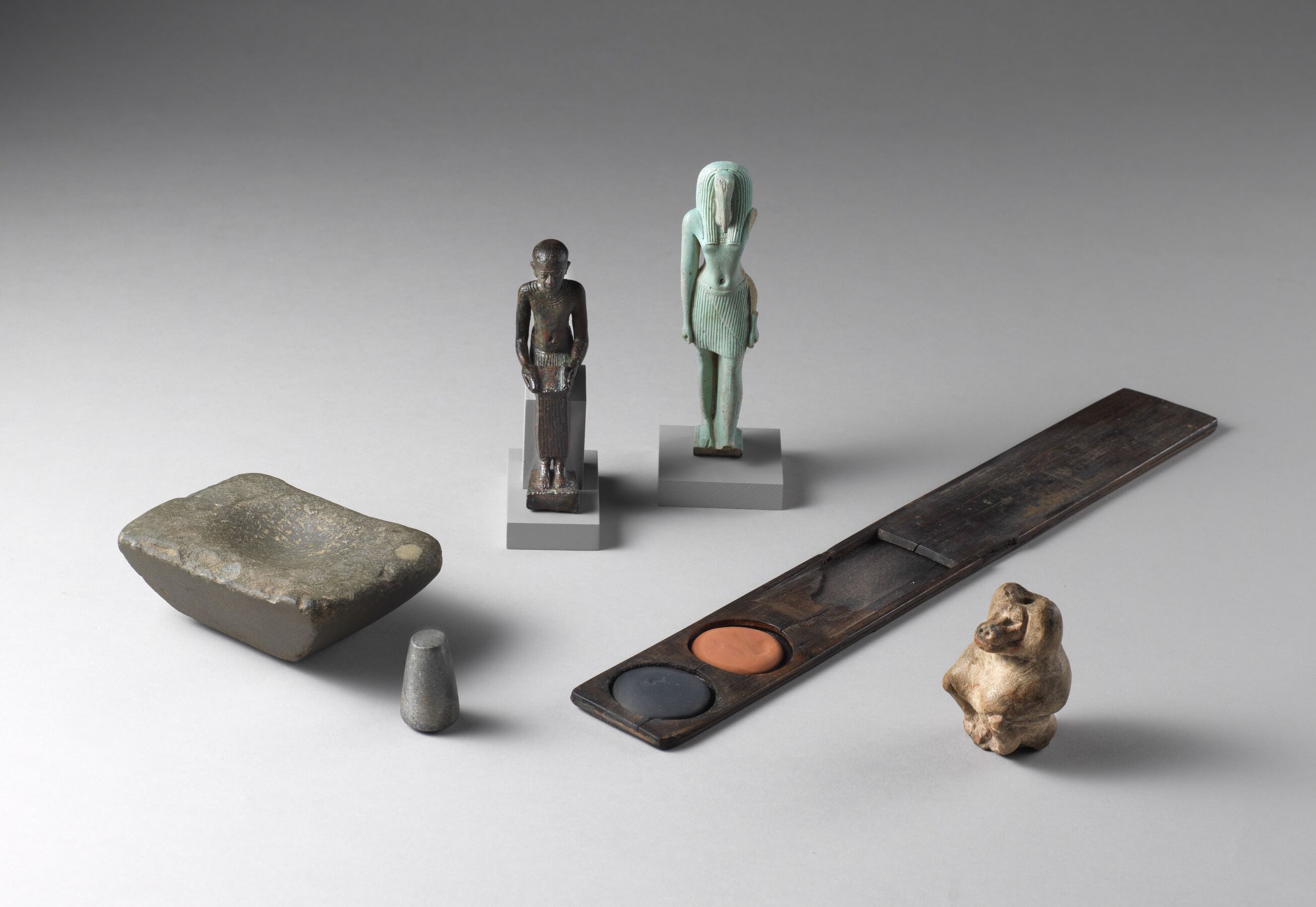The ancient Egyptians called hieroglyphs medu-netjer or “sacred words.” The ancient Egyptian writing kit was composed of a palette, often made of wood, with a slot for storing reed pens. The palette’s round wells held red and black pigments. Red ocher and lamp or bone black were finely ground using a mortar and a pestle. Plant gum or animal glue was added to the pigment to make it easier to spread. The scribal palette was also an important symbol of office that relayed the owner’s ability to read and write.
Imhotep is the architect credited with constructing King Djoser’s Step Pyramid complex at Saqqara, the beginning of ancient Egyptian monumental stone architecture. He was a man of many talents: the king’s vizier, primary counselor, chief architect, master sculptor, and high priest of the sun god, Re. The Egyptians revered him later as the god of wisdom and medicine.
Figurines of Imhotep show him sitting with a partially unfurled papyrus on his lap. The papyrus reinforces his intellect. Imhotep wears a tight-fitting cap, a broad collar, and a long-pleated skirt. Statuettes of Imhotep were popular votive gifts in the Memphite region, Sais, and Bubastis.1
Thoth was the god of writing and knowledge and a patron of scribes and scholars. In art, Thoth appeared as a baboon, an ibis, and in human form with the head of an ibis. In ancient Egypt, amulets of Thoth were placed within the mummy wrappings. Their popularity in the funerary sphere was due to the god’s recording of the final judgment, which determined whether the deceased had lived honorably and could pass into the afterlife.
MH
-
Weiss, Katja. 2012. Ägyptische Tier- und Götterbronzen aus Unterägypten: Untersuchungen zu Typus, Ikonographie und Funktion sowie der Bedeutung innerhalb der Kulturkontakte zu Griechenland. Ägypten und Altes Testament 81. Wiesbaden: Harrassowitz Verlag.. ↩︎
Bibliography
- Weiss 2012
- Weiss, Katja. 2012. Ägyptische Tier- und Götterbronzen aus Unterägypten: Untersuchungen zu Typus, Ikonographie und Funktion sowie der Bedeutung innerhalb der Kulturkontakte zu Griechenland. Ägypten und Altes Testament 81. Wiesbaden: Harrassowitz Verlag.
